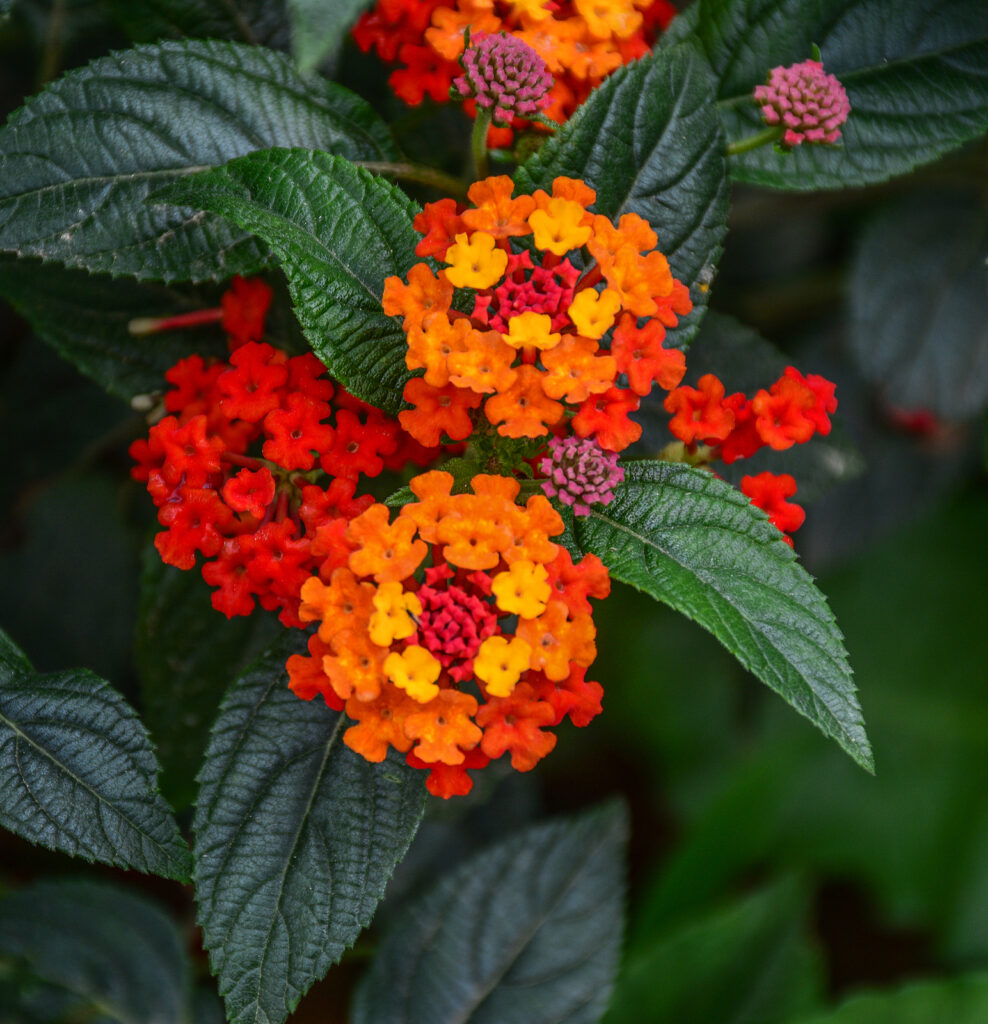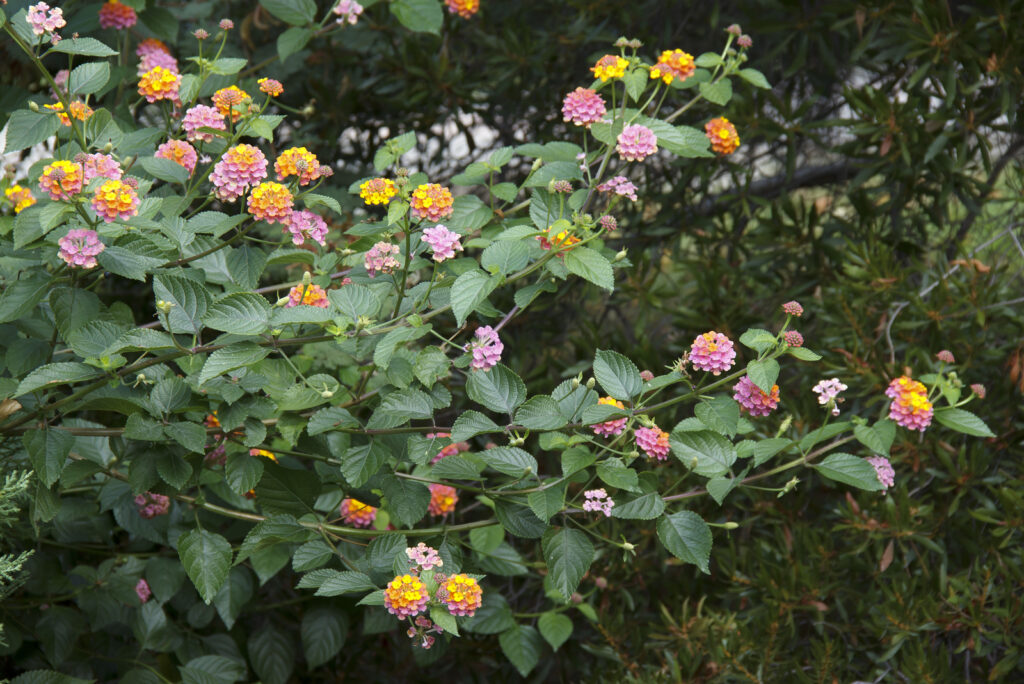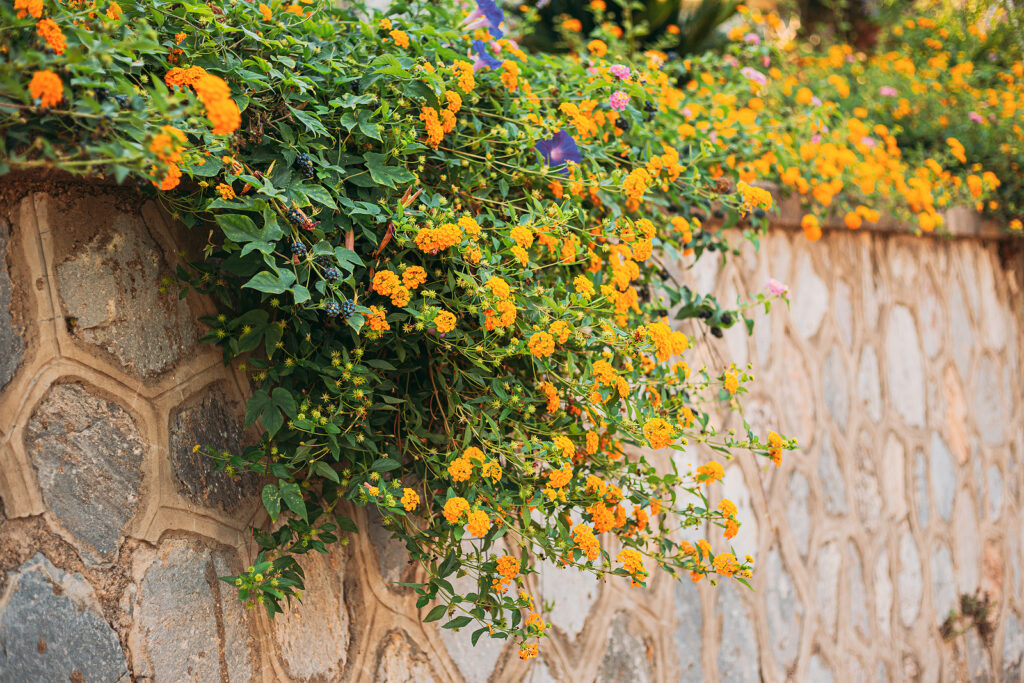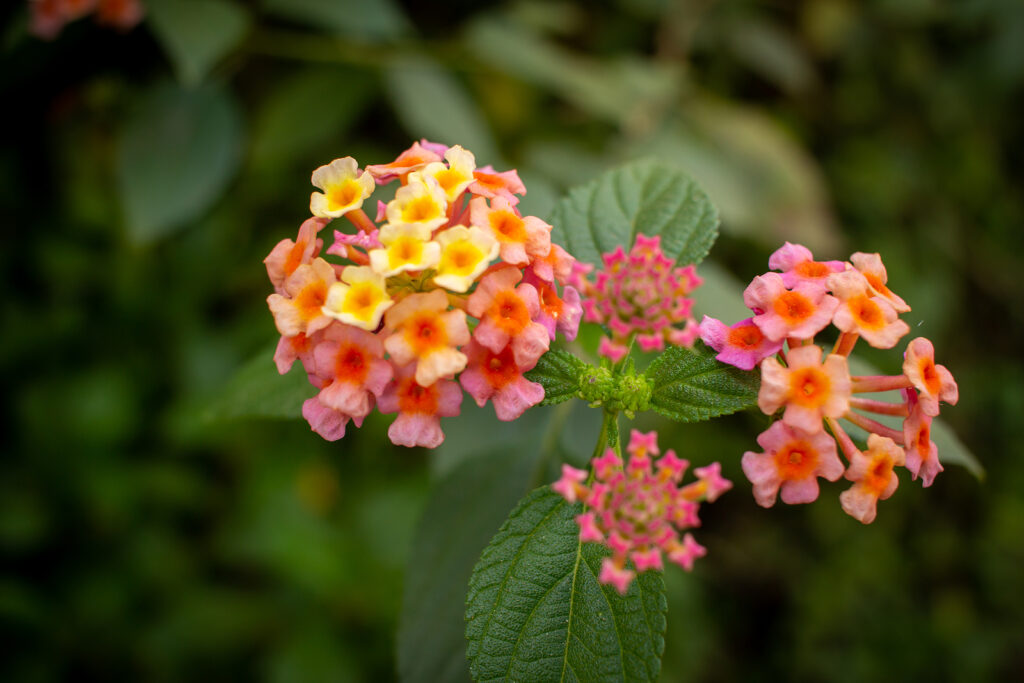Lantana is a showy semi-tropical perennial or shrub that can also be grown as a potted plant indoors. Its multi-colored small but brilliant and profuse flowers make it a standout in a border or bed.
Lantana resembles Verbena to which they are related. they are native to tropical America.
Lantana cultivars are mostly ow, compact, and full flowered. Flowers appear in flattish clusters from brilliant yellow through orange to red. They are excellent summer bedding plants. They bloom continuously until nipped by the frost in autumn.
Lantana can be propagated either by seeds or cuttings. Give young pants fairly high temperatures during their early growth.

Get to know Lantana
- Plant type: Evergreen perennial or shrub in Zones 9-11; warm-season annual in Zones 2-8
- Growing Zones and range: Zones 8 to 10
- Hardiness: Can survive a light frost; tolerates salt and wind
- Height and width: 18 to 24 inches (45-61cm) tall, 4 to 6 feet (1.2-1.8m) wide
- Foliage: Leaves are simple and toothed, often wrinkled
- Flowers: Flat domes of small bright yellow and orange bloom also white, red, and lavender; small individual flowers have a slender tube with flared, flattened fae
- Bloom time: During hot weather
- Uses: Groundcover, seaside gardens, parking areas, containers; flowers attract hummingbirds and butterflies
- Common name: Lantana
- Botanical name: Lantana camara
- Family: Verbenaceae
- Origin: South Africa
Where to plant Lantana
- Grow lantana in full sun.
- Plant lantana in average to humus-rich, well-drained soil.
- Where lantana is marginally hardy plant against a south-facing wall for extra protection
- Lantana prefers a soil pH of 5.5 to 6.5.

When to plant Lantana
- Set lantana in the garden in spring after the last frost and the soil has warmed to 50°F (10°C).
- Sow seeds indoors 12 to 15 weeks before the last frost in spring.
Planting and spacing Lantana
- Sow seeds indoors in sterile seed-starting mix or in evenly prepared garden soil.
- Germination takes 6 to 8 weeks at 70° to 75°F (21°-24°C). Soak seeds in warm water before sowing.
- Space lantana 3 to 6 feet apart.
How to water and feed Lantana
- Keep the soil evenly moist; mature plants will tolerate drought.
- Water deeply during dry weather.
- Fertilize lantana in spring with a 9-month, balanced, slow-release fertilizer,

Lantana care
- Mulch around lantana to conserve moisture.
- Pinch seedlings to encourage branching.
- Prune hard in spring to remove dead wood and to shape as needed.
- Overwinter outdoors specimens in a cool, light, frost-free place,
Lantana pests and diseases
- Lantana is susceptible to whiteflies, aphids, caterpillars, mealybugs, and spider mites.
- Lantana is prone to mildew in shade.
Lantana propagation
- Propagate lantana from cuttings.
- Plant lantana seed in spring; take semi-hardwood cuttings in summer.

Lantana varieties and cultivars to grow
- Lantana camara, Lantana: Tender perennial shrub grows 3 to 6 feet (.9-1.8m) tall; bears 1- to 2-inch wide flowers heads with 1/3 inch wide blooms in shades of yellow, pink, cream, red, lilac, or purple; often grown as warm weather annual. ‘Camara Mixed Hybrids’ grows to just 18 inches (45cm) tall.
- L. montevidensis, weeping lantana: tender spreading shrub 6 to 36 inches (15-91cm) tall and some cultivars taller; can be used as a dense groundcover’ bears dense clusters of rose-lilac flowers.
Hybrid cultivars of the two above include:
- ‘Christine’ grows to 3 feet tall and 8 feet wide; cerise pink flowers; can be trained as small patio tree.
- ‘Confetti’ grows to 3 feet tall; blossoms are a mix of yellow, pink, and purple.
- ‘Gold Mound’ grows to 2 feet tall has golden yellow flowers.
- ‘Irene’ grows 3 to 4 feet tall with magenta and lemon-yellow blooms.
- ‘Radiation’ grows 3 to 5 feet tall with rich orange-red blooms.















